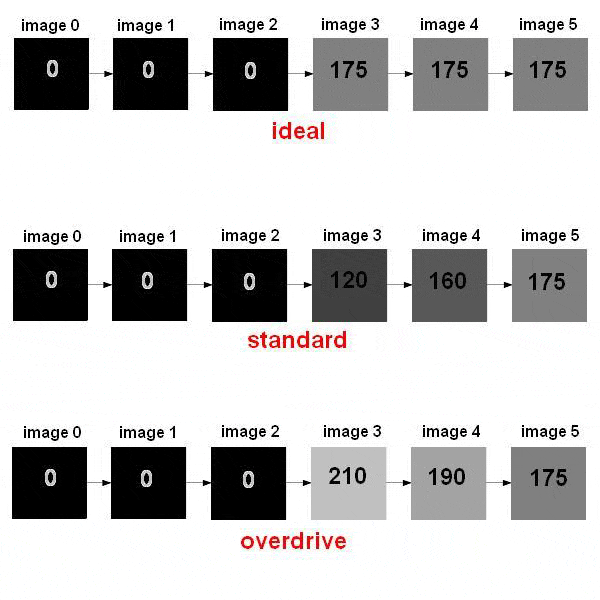ViewSonic VX924: The Near Future Of LCD Displays
A Little Technospeak, Continued
Here we see that it takes nearly two frames for the curve to attain a precision of 10%, or approximately 31 ms, and not 4.5 ms.
Clearly, rising time has been confused with response time. Before panels using Overdrive came out, LCD displays didn't show peaks of excess voltage like what you see here, which meant that the rising time from 10 to 90% was equivalent to the response time at 10%. But that's no longer true.
The manufacturer has chosen to compensate for the panel's lack of reactivity by sacrificing accuracy, and the measurement announced to consumers has been adapted so that it doesn't reflect this lack of precision. I simply can't go along with that.
The VP191b had the same problem, but at least its panel stabilized the tint in the next frame, which produced a final response measurement of something like 16 ms, or an actual latency that's quite a bit faster than what we'd seen up until then in terms of ISO measurement.
How does all this translate in terms of the actual image?
The manufacturer has replaced a sequence of frames that weren't accurate by another series which is just as inaccurate. But instead of being under-lighted, the intermediate state is over-lighted.

Stay on the Cutting Edge
Join the experts who read Tom's Hardware for the inside track on enthusiast PC tech news — and have for over 25 years. We'll send breaking news and in-depth reviews of CPUs, GPUs, AI, maker hardware and more straight to your inbox.
Current page: A Little Technospeak, Continued
Prev Page A Little Technospeak Next Page What Does It Mean To Users?Most Popular

